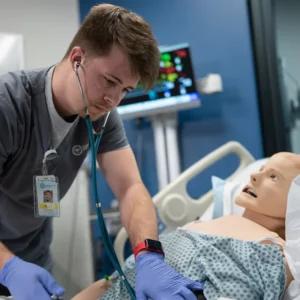 Medical assisting is one of the hottest jobs in the marketplace right now, and according to the Bureau of Labor Statistics,1 that should at least continue all the way into 2020. With a projected growth of 31 percent over a span from 2010-2020, and a growing need for workers in the healthcare sector in general, medical assisting is one of the most surefire ways to find a job after graduation.
Medical assisting is one of the hottest jobs in the marketplace right now, and according to the Bureau of Labor Statistics,1 that should at least continue all the way into 2020. With a projected growth of 31 percent over a span from 2010-2020, and a growing need for workers in the healthcare sector in general, medical assisting is one of the most surefire ways to find a job after graduation.
Why there’s a need
Unlike the greater economy, health care tends to operate by its own rules. An estimated 30 million previously uninsured people will be gaining access to health services through the Affordable Care Act (ACA).2 That number, along with the coming onslaught of baby boomer retirees, means more patients will be entering, or relying on, the health care system than ever before. A report from The Commonwealth Fund, Insuring the Future: Current Trends in Health Coverage and the Effects of Implementing the Affordable Care Act, delves even deeper into the growing need for health care workers of all kinds. Noting that approximately 84 million people in America between the ages of 19 and 64 – 46 percent of the total population – are uninsured or underinsured,3 the report highlights the still enormous gap in care and services in the United States. Fortunately, that number should decline significantly as the ACA is fully rolled out starting in 2014. With such a large number of new patients, as well as older patients who will require more extensive care, administrators and doctors are searching for people to fill all manner of jobs in the industry. The kind of work performed by medical assistants – from assisting with examinations and conducting procedures under a physician’s supervision to clerical and administrative work – are in especially high demand since they form the backbone of the health care profession.
Pursuing a career as a medical assistant
In response to high demand and an overall shaky job market, many people are beginning to look at the medical assistant profession as a guaranteed growth opportunity. Whether they are just getting started in their career search or transitioning from a previous occupation, people are becoming increasingly aware that the healthcare sector offers them an opportunity to find a secure job while also providing a service to the community. As the country’s healthcare system undergoes its biggest transition in more than a century, opportunities for job stability and career growth are widely available, and pursuing medical assistant training is one way you can be a part of it. 1 United States Bureau of Labor Statistics, “Occupational Outlook Handbook – Medical Assistants,” Mar. 29, 2012. http://www.bls.gov/ooh/healthcare/medical-assistants.htm 2 PricewaterhouseCoopers, “30 Million Newly-Insured Under the Affordable Care Act: Who are they?” 2012-13. http://www.pwc.com/us/en/health-industries/publications/health-insurance-exchanges-and-medicaid-expansion.jhtml 3 The Commonwealth Fund, “Insuring the Future: Current Trends in Health Coverage and the Effects of Implementing the Affordable Care Act,” Apr. 2013. http://www.commonwealthfund.org/~/media/Files/Publications/Fund%20Report/2013/Apr/1681_Collins_insuring_future_biennial_survey_2012_FINAL.pdf



